Honda CR-Z (Design Critique)
In what is now ancient and obscure automotive history, in the late 1960s American Motors decided to shorten the chassis of its pony car offering, the Javelin, in order to create a hard-to-categorize two seat AMX. A decade and a half later Honda seemed to have the same idea by abbreviating the chassis of the mundane Civic, creating a nimble and attractive two seater.
Honda even took a cue from AMC by using the ‘X’ designation and christening the sporty and economical two seater the CR-X. The car proved to be popular among autocrossers and fuel misers alike. However, in the auto industry it seems that very few automakers know how to keep a good thing going: Honda messed with the successful formula in 1992 by replacing the car with the targa-roofed del Sol. The del Sol was heavier and less passionately designed and by 1997 less than 6000 were sold in the US at which point the Japanese automaker threw in the towel. Honda’s next attempt at a front-wheel-drive 2 seater was the 1999-2006 Insight. Bearing a strong resemblance to the second generation Civic with its two-piece kammback rear window this full hybrid also failed to generate sales or interest form the CR-X loving crowd.
Now Honda is attempting to see if the high-mileage / sports coupe combination formula will work in 2010. Dubbed CR-Z (perhaps Honda found it unwise to refer to the car as CR-Y), and unlike the CR-X, this car shares little with the Civic. The CR-Z offers a lot of similarities to the 2-seat Insight (not to be confused with the 2010 4-door hatchback) by again offering a hybrid system with a manual transmission. With a combined electric/gas power rating of 122 horsepower and 128 lb-ft of torque, this will hardly be a drag racer – at least not while carrying around over 2600 lbs. Will the CR-Z follow in the footsteps of its Insight and del Sol forbears? Or will this go round resurrect the cult following initiated by the original CR-X? The design will surely have a lot to do with it.
A1 – Kammback window has become commonplace in recent automotive history. Everything from the unloved Pontiac Aztek to the contemporary Toyota Prius and Honda Insight five doors have sported this look. It may be controversial, but it generally aids in slippery aerodynamics.
A2 – Rear wiper swipes across a nearly horizontal upper rear window. Seems that it may do little to improve rear visibility.
A3 – Large triangular tail lights have a concavity to them. Odd integration to the upright glass and bottom of curved hatch gives an incongruous appearance; much less attractive than tidy rear design on the vintage CR-X.
A4 – Is this a rear diffuser or merely a cosmetic grey piece to reduce the apparent height of this truly massive rear bumper covering?
B1 – Front overhang is enormous and awkward, not unlike the oft criticized Aveo5. Perhaps it only looks this bad in profile.
B2 – Uncommon in today’s car design is a blacked out A-pillar. This one fortunately avoids the forward quarter window like the Civic sedan.
B3 – Many sharp creases in the body panels draw the eye simultaneously upward and rearward. Perhaps this helps to reduce the visual height of the large hatch area.
B4 – Door handle features a nifty little scoop at the trailing edge of the door recalling such successful cars as the GEO Storm.
B5 – Rear quarter window angles backwards unlike the original 2-seat Insight and CR-X. The resulting C-pillar likely robs a lot of rearward visibility. One of the strengths of the CR-X design was its airy greenhouse.
C1 – Rear haunches look much better from this angle than from the rear. This results in a much improved look over the 2-seat Insight rear which tucked its rear wheels inboard of aero fender skirts.
C2 – Intake and fog lamps set above attractive sharp edged lower fascia. Hopefully designers have positioned these delicate edges to stay clear of parking curbs.
C3 – Grille appears to be functional on the at the bottom only, with the upper portion blocked out.
C4 – Differing from the concept car’s grille mounted badge, Honda logo is large and prominent above the happy-face grille.
C5 – Huge space between hood and windshield base tucks the wiper arms out of the way, presumably aiding reducing drag. This is a feature domestic automakers pioneered in the late 1960s only to be mysteriously abandoned in the last couple of decades.
D1 – Side glass is much smaller from the inside than it appears on the outside.
D2 – CR-X interiors had enormous cargo volume but resulted in an echoing interior. Perhaps Honda felt a fold down pseudo rear seat would reduce noise.
D3 – False rear seat will work nice as a shelf for small baggage or groceries.
D4 – Folding feature allows for versatility of original CR-X.
E1 – Simple instrument panel design is a typical Honda strength. The CR-Z follows that tradition. How is it possible to achieve all the necessary functions with so few buttons?
E2 – Blue lighting continues an industry trend.
E3 – Navigation system sits far from the driver, perhaps the only major flaw in this interior design.
E4 – 3 pedals in a hybrid! Enthusiasts and do-it-yourself fuel misers will rejoice together.
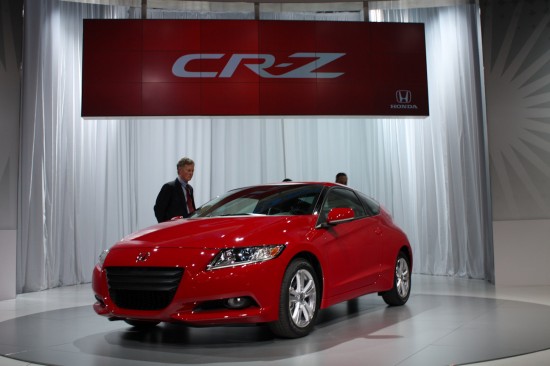
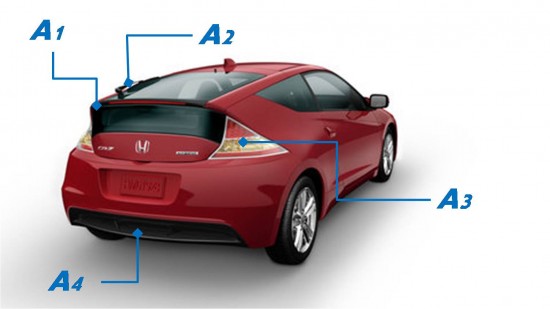
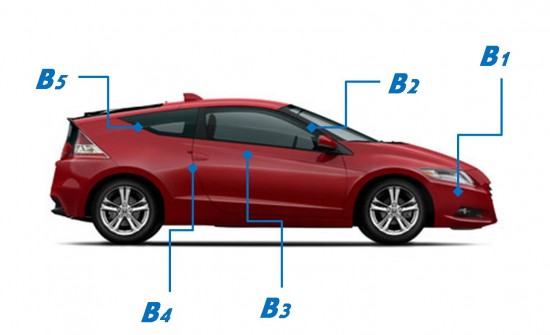
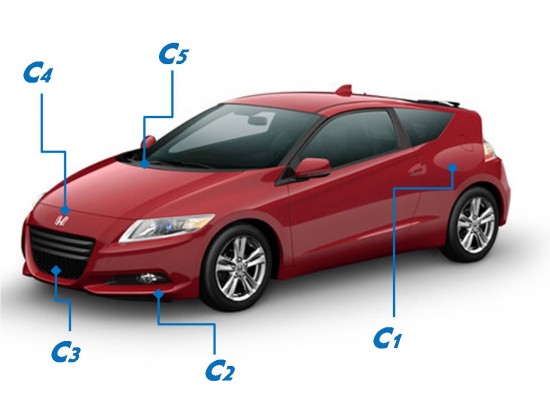
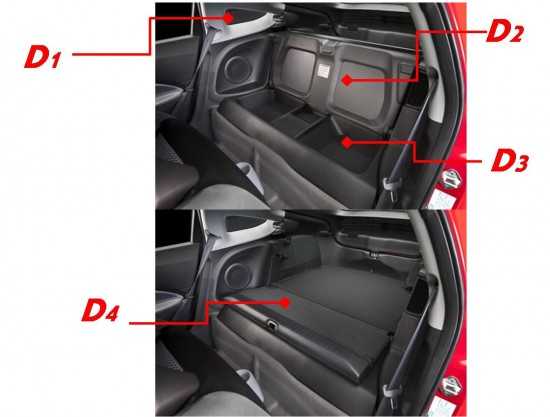
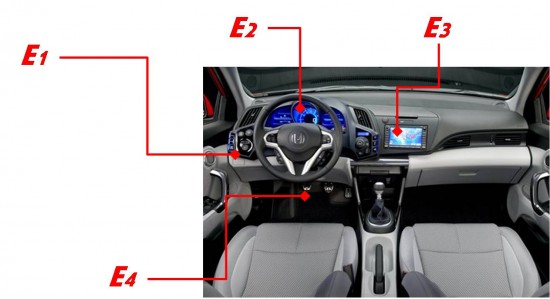







great post as usual!
great post as usual!